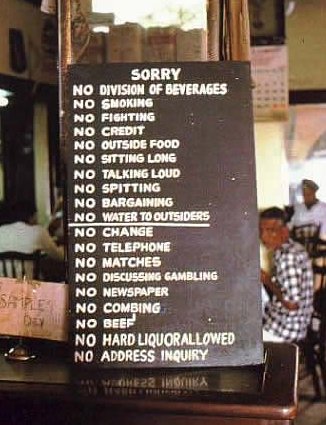Boundaries allow us to focus on what matters most.

I love this photo. This eatery is obviously clear about its boundaries and confident enough about their business to make them explicit.
Every time I see this image, I wonder about how each one of us establishes our boundaries.
- How do we decide where to draw the line?
- How well do we hold the boundaries we set?
- How rigid or flexible are our boundaries?
- What does it mean for us to say “no”?
This Harvard Business Review article, “No” is the New “Yes”: Four Practices to Reprioritize Your Life, offers four practices or tactics to “reprioritize your life”.
But saying “no” isn’t easy.
I know many people — both men and women — for whom engaging in these seemingly straight-forward practices would be very difficult. Because saying “no” in such cases isn’t a simple tactic; it includes the person’s assumptions of what it means to say “no” and the implications of doing so.
When in spite of our intentions our efforts don’t work, it is because we trying to solve “adaptive” challenges through “technical” means. Robert Kagan and Lisa Laskow Lahey offers this language in their book, Immunity to Change: How to Overcome It and Unlock the Potential in Yourself and Your Organization (Leadership for the Common Good).
And having the language to describe, recognize and understand what’s going on is the first step towards resolution.